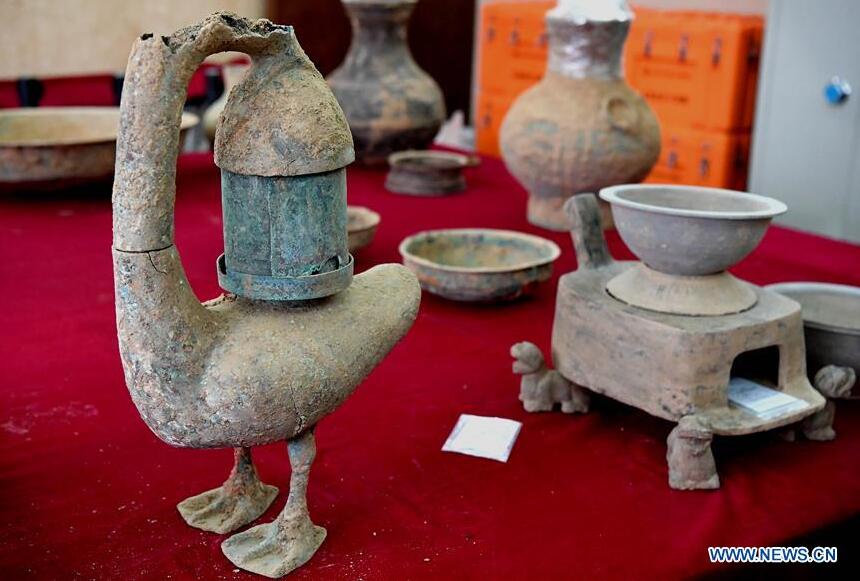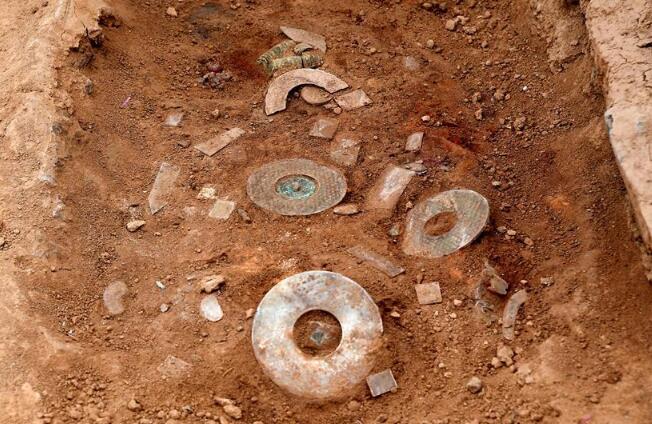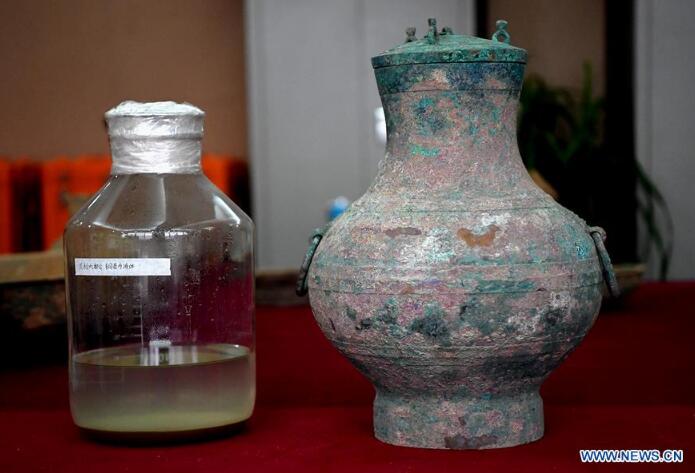Chinese archaeologists discover 2,000-year-old liquor in ancient tomb
Archaeologists in central China's Henan Province on Tuesday poured liquid out of a bronze pot unearthed from a Western Han Dynasty (202 BC to AD 8) tomb into a measuring glass, which gave off an aroma of rich wine.

Photo taken on Nov. 7, 2018 shows a lamp in the shape of a wild goose unearthed from a Western Han Dynasty (202 BC to AD 8) tomb in Luoyang, central China's Henan Province.
"There are 3.5 liters of the liquid in the color of transparent yellow. It smells like wine," said Shi Jiazhen, head of the Institute of Cultural Relics and Archaeology in the city of Luoyang.
He said the discovered content needs to undergo further lab research so the team can accurately ascertain the ingredients of the liquid.

Photo taken on Nov. 7, 2018 shows the excavation site of a Western Han Dynasty (202 BC to AD 8) tomb in Luoyang, central China's Henan Province.
A large number of color-painted clay pots and bronze artifacts were also unearthed from the tomb, which covers 210 square meters. The remains of the tomb occupant have been preserved, said Shi.
He said they will conduct lab research on items found in the main tomb chamber.

Photo taken on Nov. 7, 2018 shows relics unearthed from a Western Han Dynasty (202 BC to AD 8) tomb in Luoyang, central China's Henan Province.
Similar-aged rice wine had earlier been found in other tombs dating back to the Western Han period. Liquor made from rice or sorghum grains were a major part of ceremonies and ritual sacrifices in ancient China. It was often contained with elaborate bronze cast vessels.

Photo taken on Nov. 7, 2018 shows the bronze pot containing the liquid unearthed from a Western Han Dynasty (202 BC to AD 8) tomb in Luoyang, central China's Henan Province.
Shi said the bronze pot containing the liquid is one of the two big bronze items unearthed from the tomb. The other is a lamp in the shape of a wild goose, which was the first of its kind found in the city of Luoyang, capital of 13 dynasties, with a history of 3,000 years.

